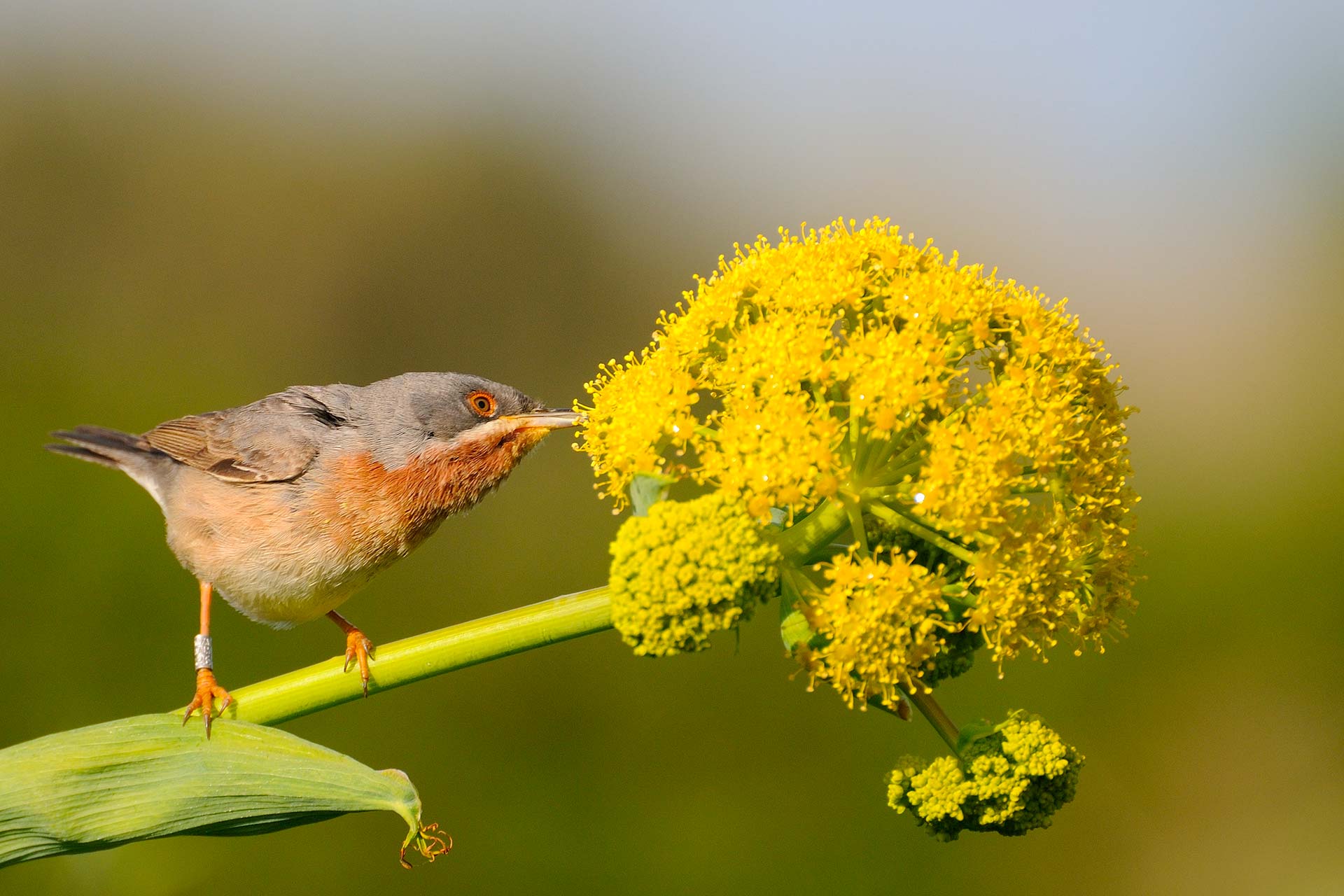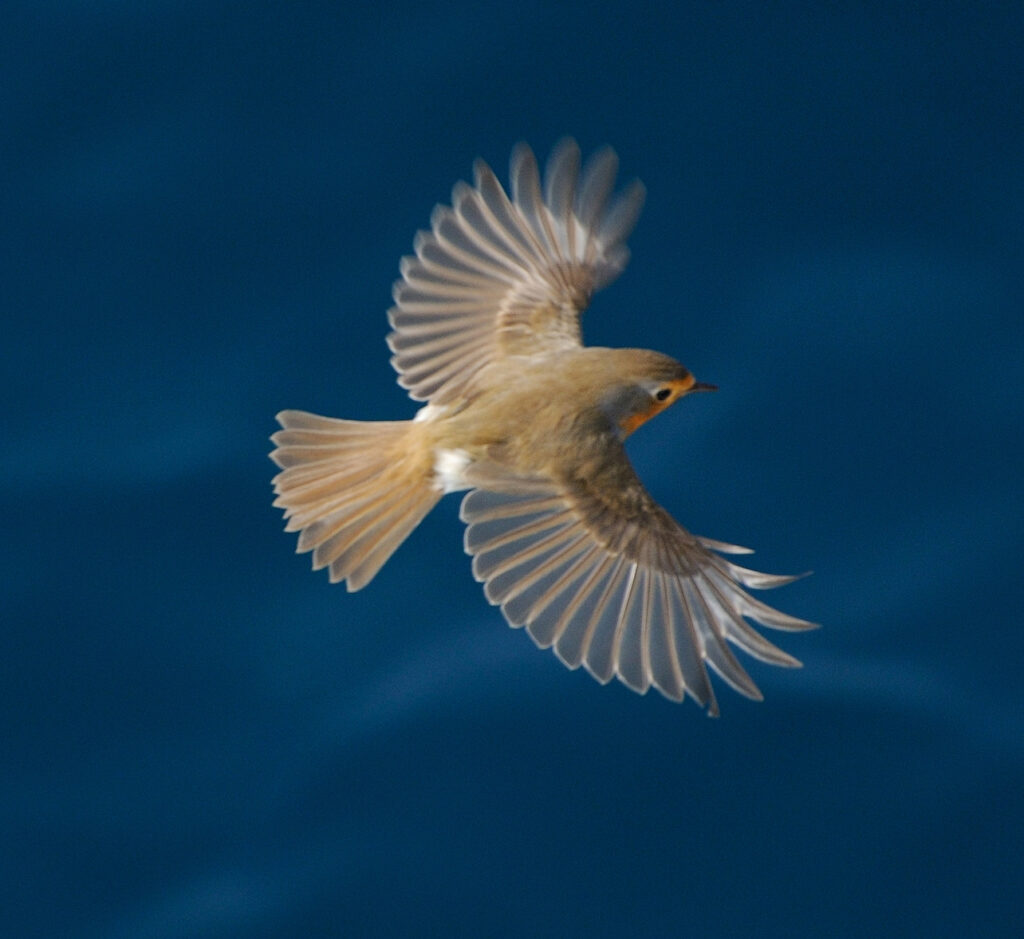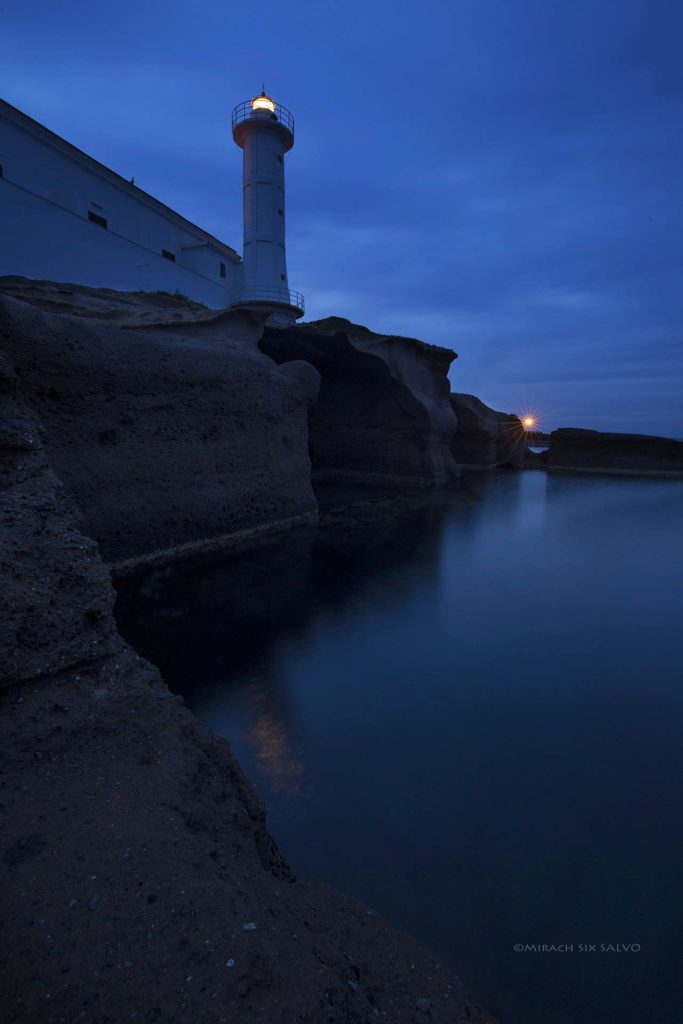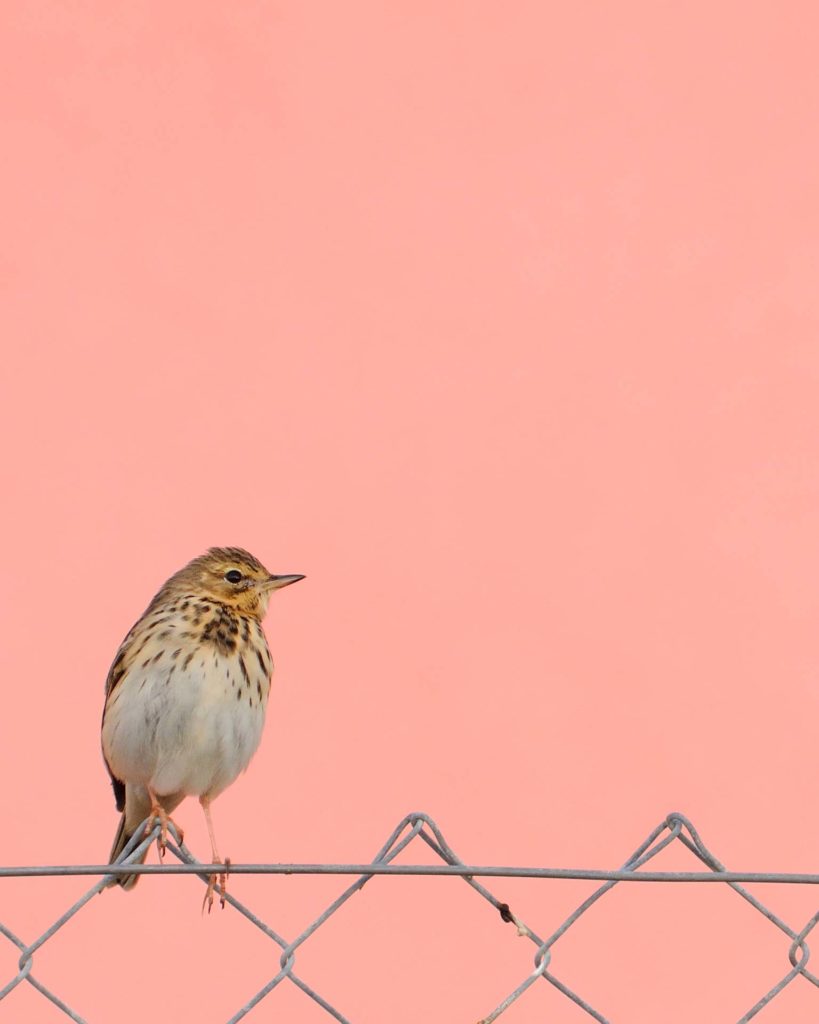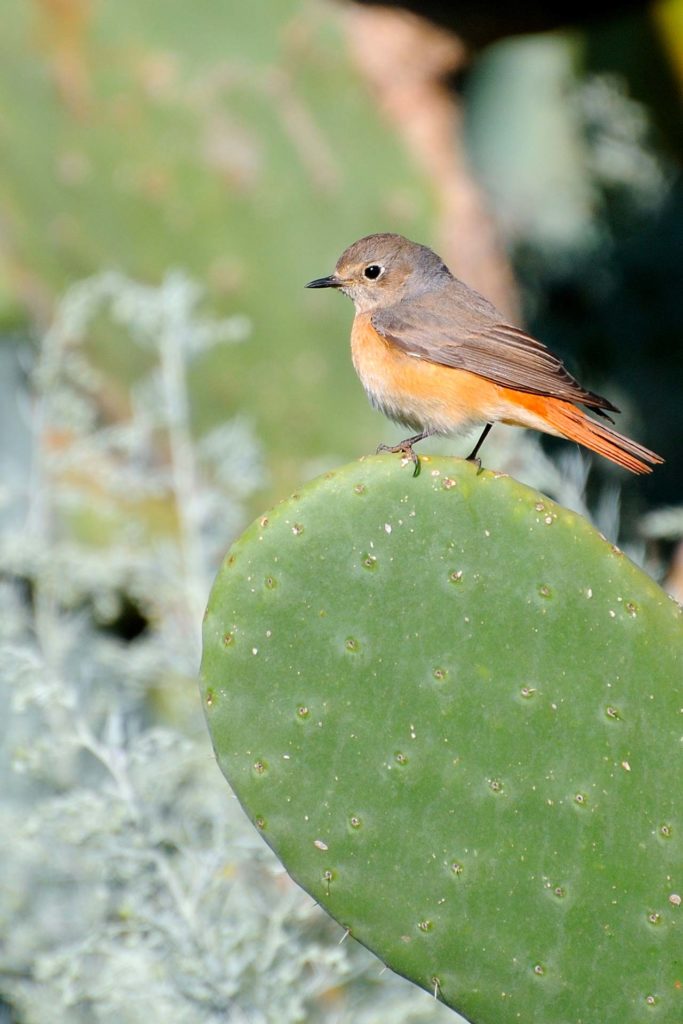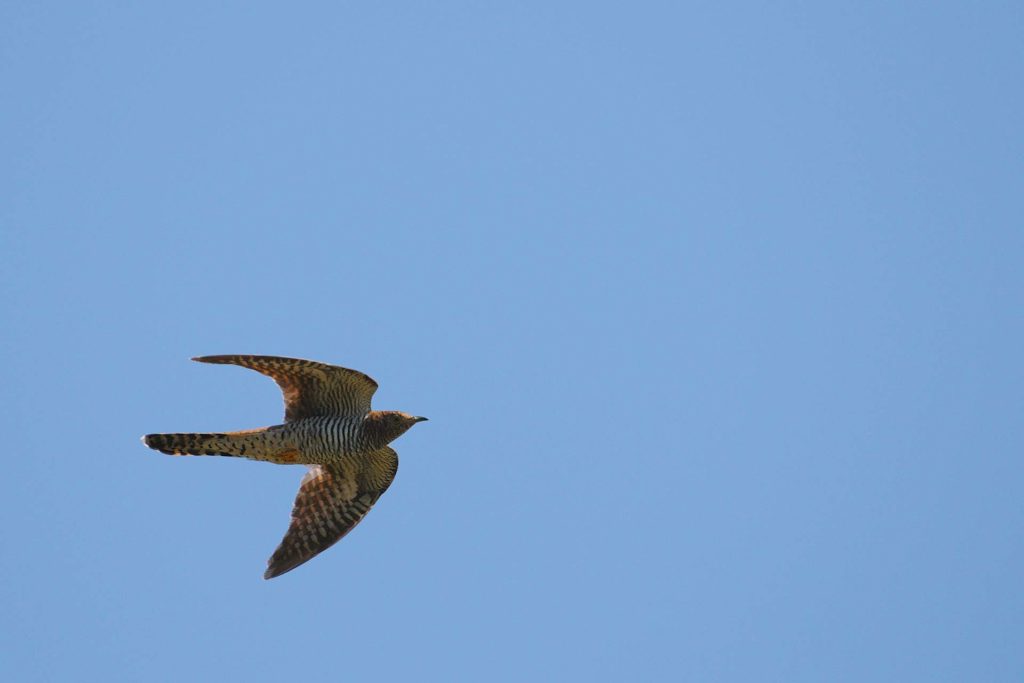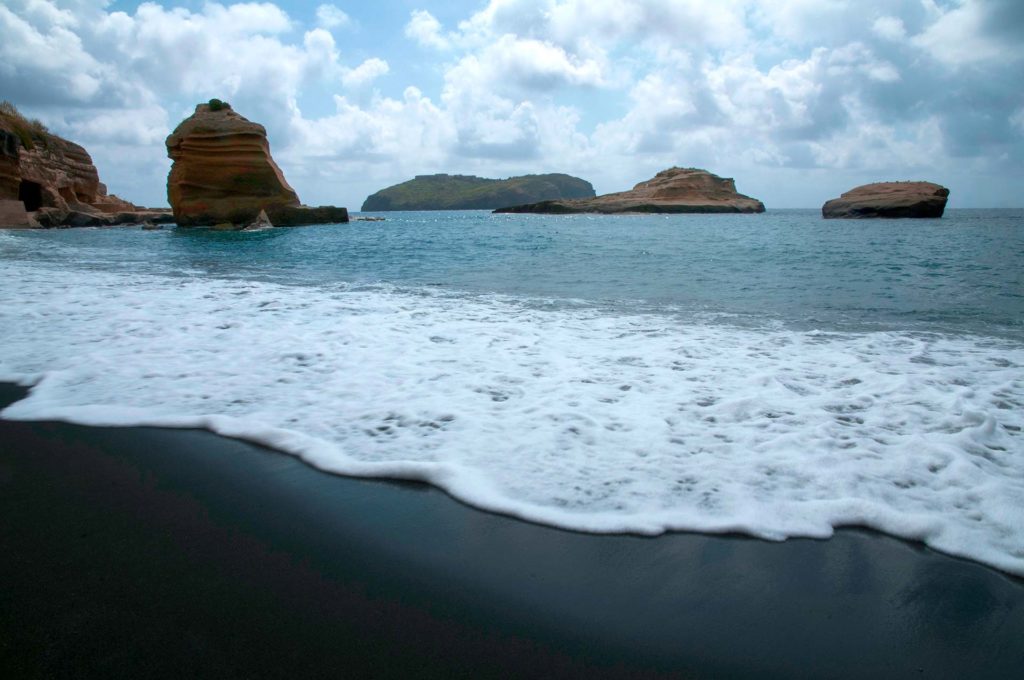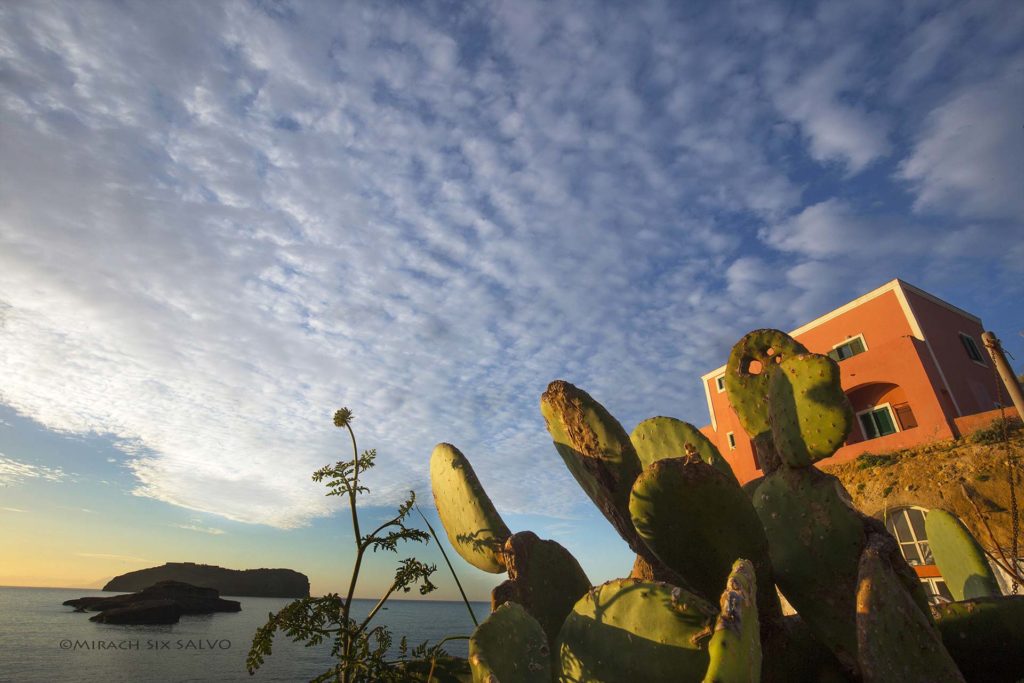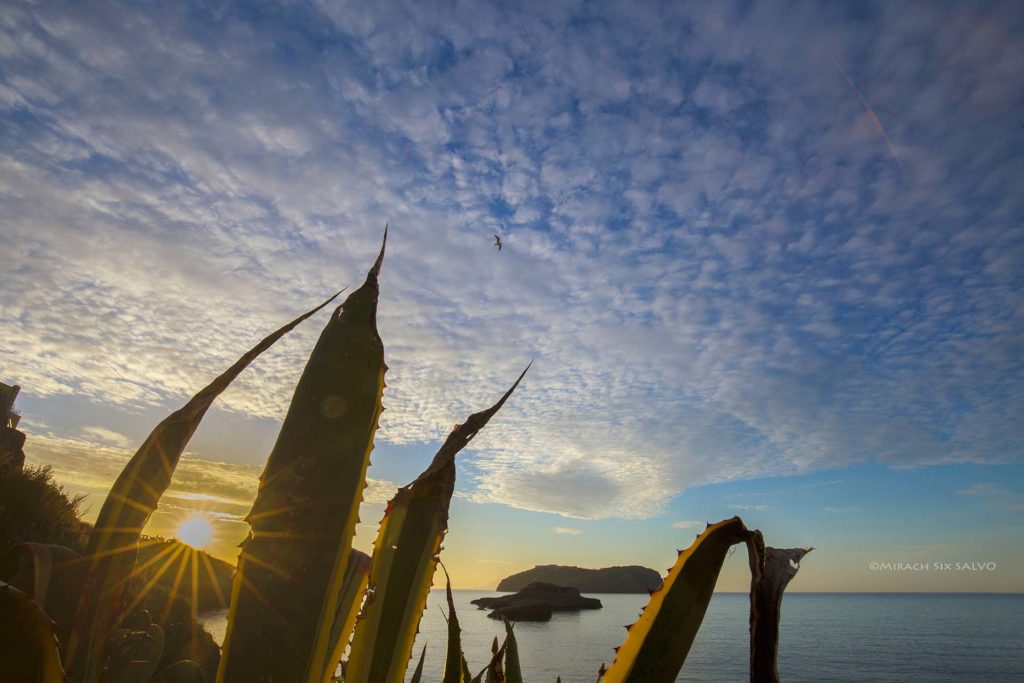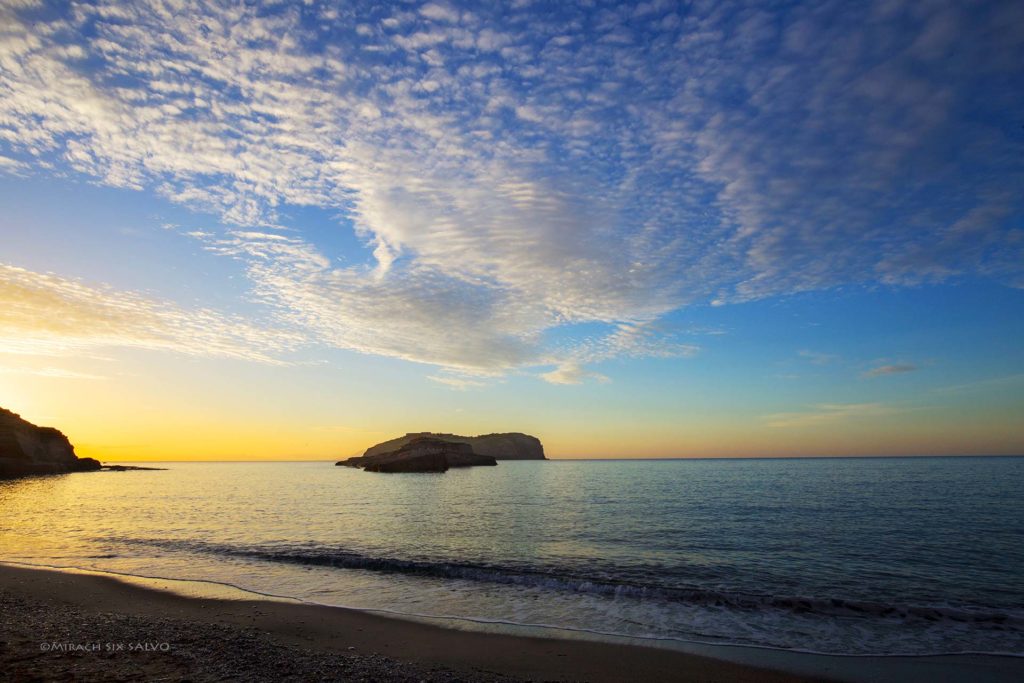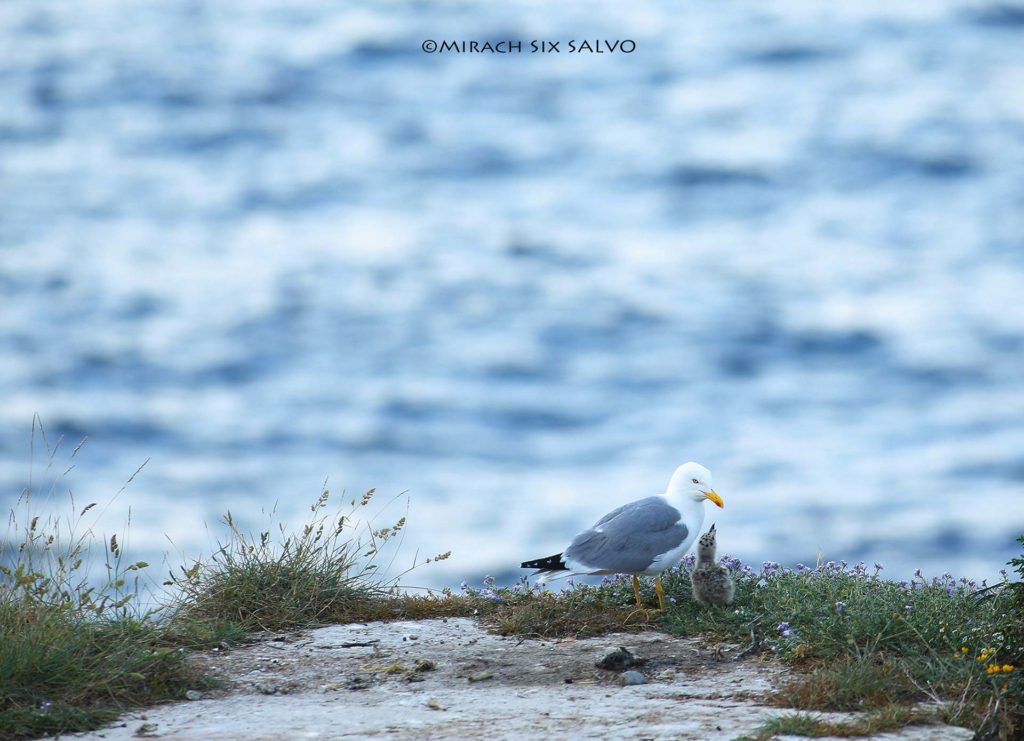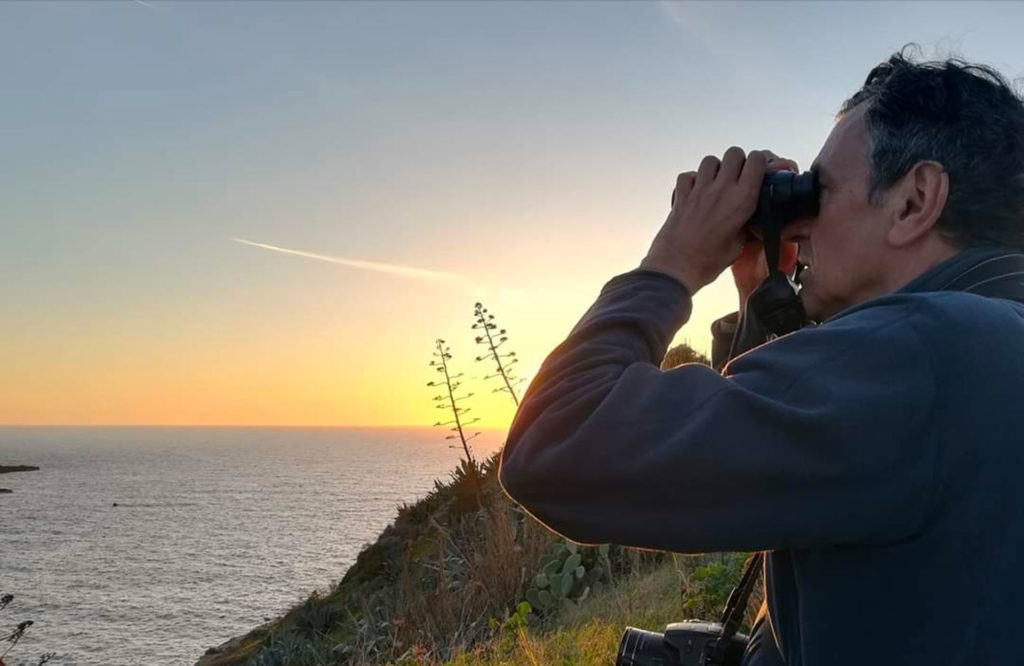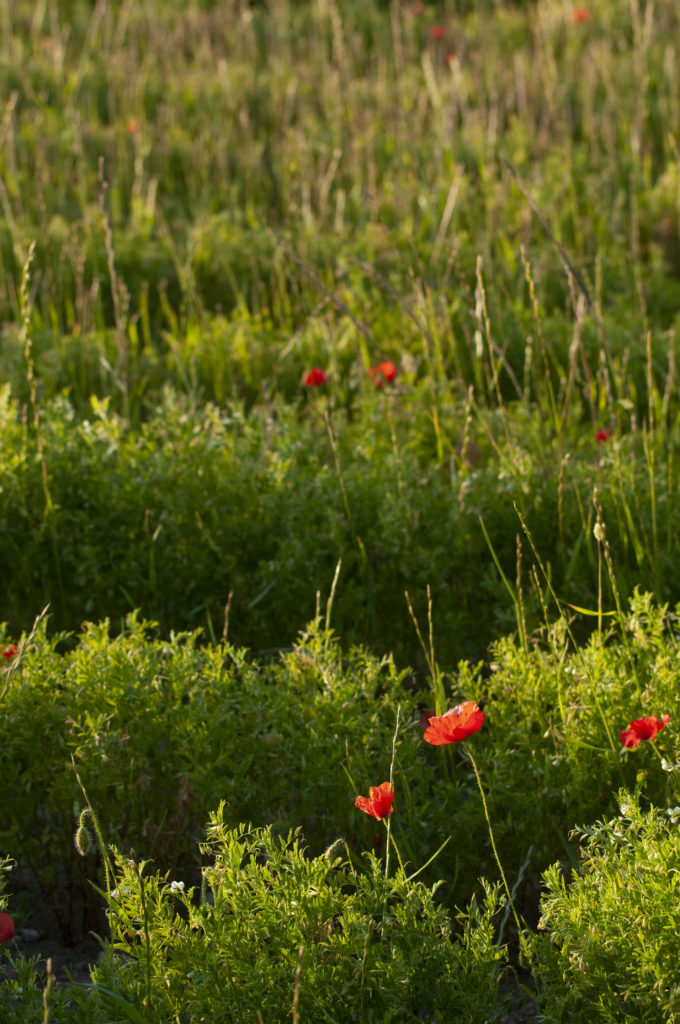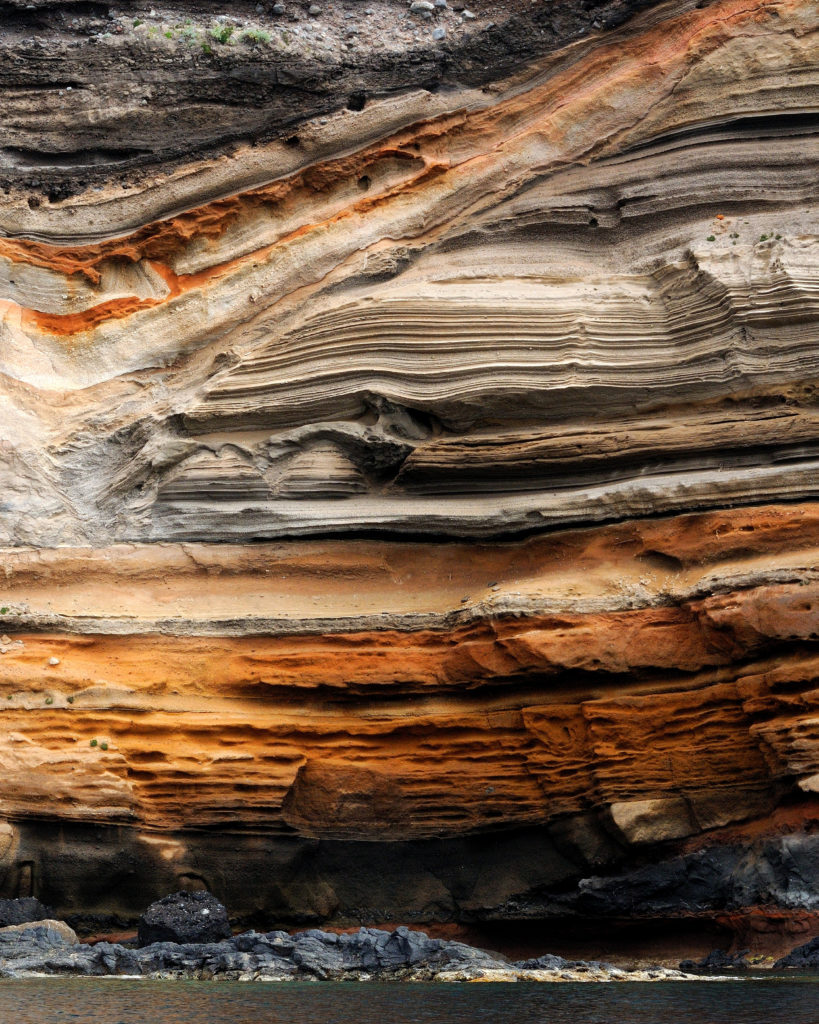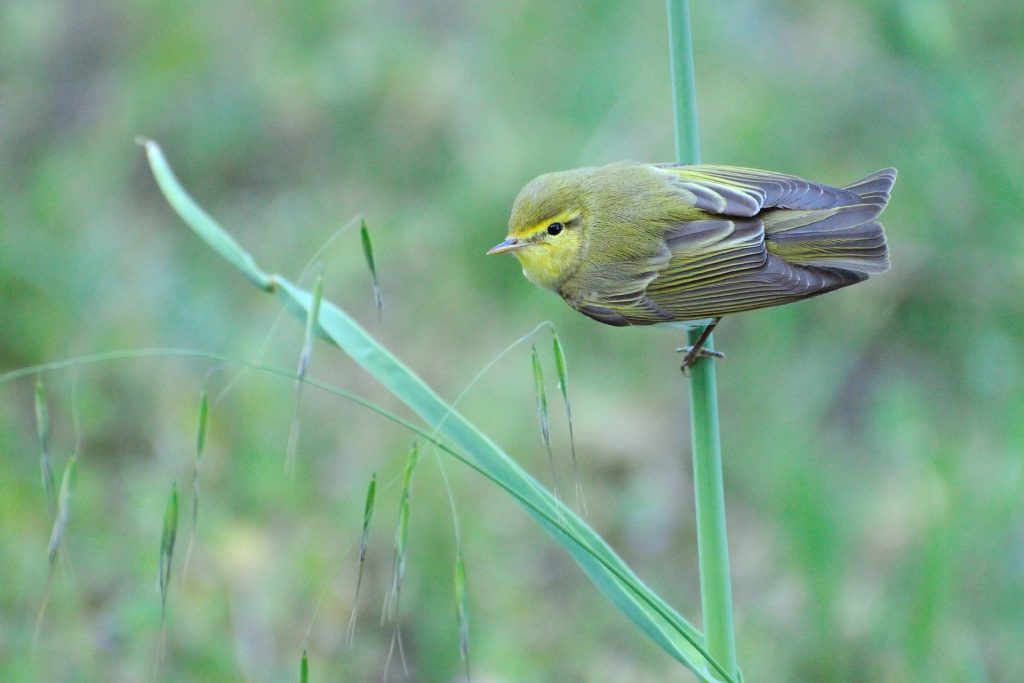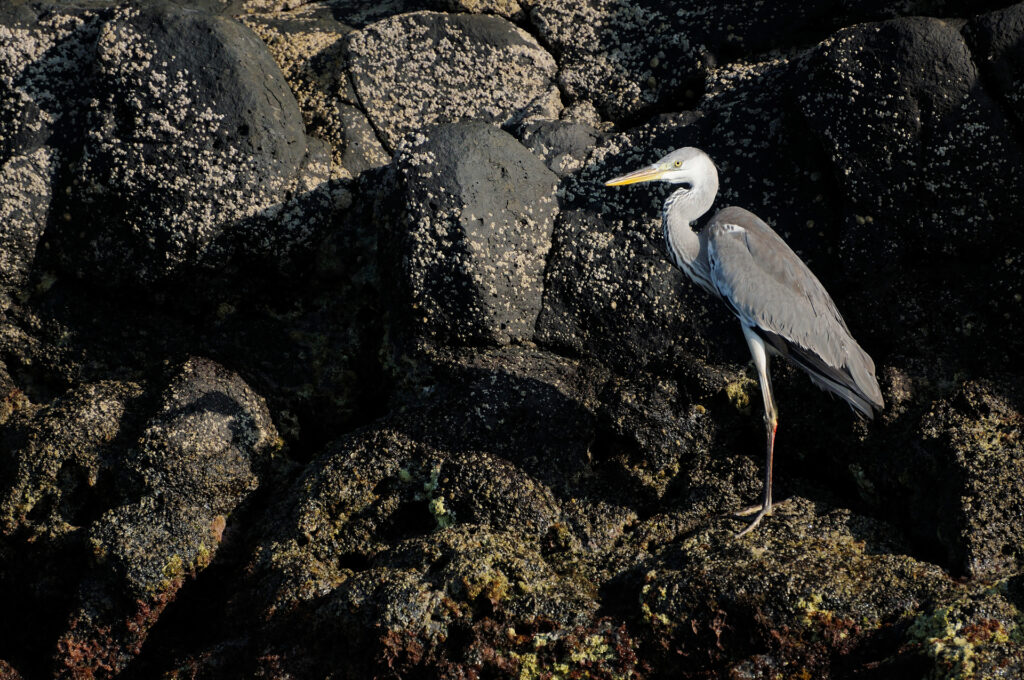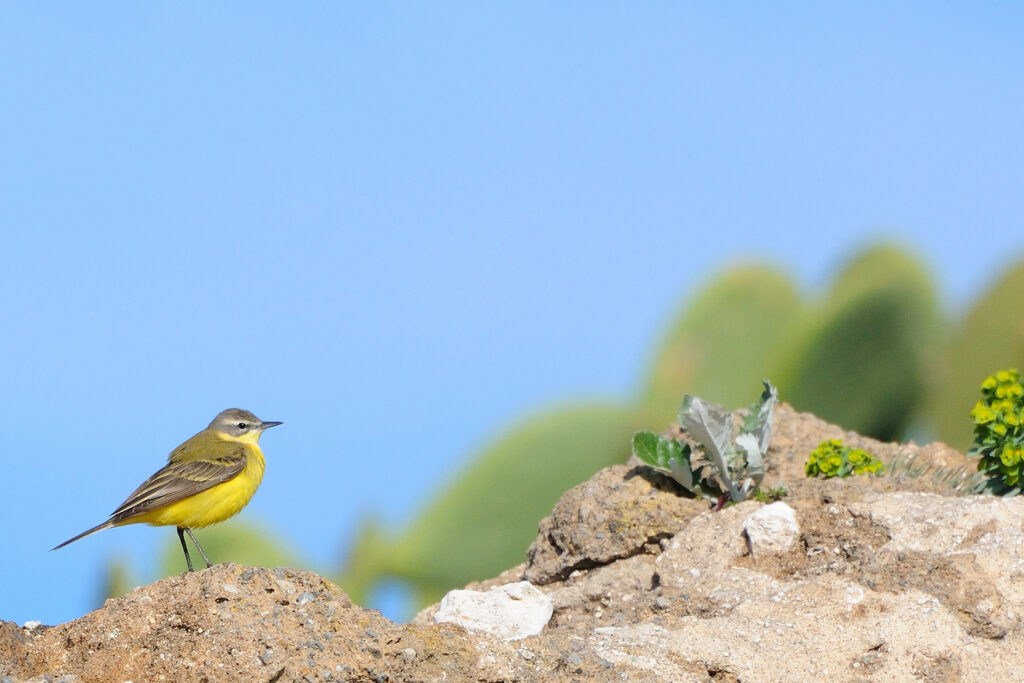Ventotene – a small island off the coast of Italy a few hours from Rome and Naples – is a site of fundamental importance for birdlife and migration. Thanks to its geographical position, in fact, it represents the first stop for many species that seasonally make huge travels between the African continent and Europe (and the other way around), and that “invade” with very high numbers the island.
In spring Ventotene with its cultivated fields and its typical plants of the Mediterranean environment welcomes the so-called “short-range migrants”, all those species that spend the winter months around the Mediterranean Basin and that go as far as possible on the coasts of North Africa and the “long-range migrants”, those who spend the winter south of the Sahara.
Autumn, however, it is considered by many to be the season of rarities. The island, in fact, in addition to being mainly affected by the presence of short-range migrants, is affected by the arrival of less frequent species for our country, often due to the random movement of young and “inexperienced” migratory birds.
With its volcanic origin, the mineral-rich soils of the island offer products with a unique flavor also for its human inhabitants. After a period of departure from the countryside, we are witnessing a gradual return to agriculture: in addition to those who have always cultivated the numerous gardens on the island, there have been those who have taken up ancient crops such as that of Lentils, those who have restored ancient vineyards and those who have combined old traditions with the most recent and innovative techniques, introducing synergic cultivations and permaculture.
The life of the fields and the relationship with the migratory birds has always been strongly rooted in the life of every islander. Over time, the hunt and capture of small passerines have been replaced by research projects, monitoring and interest by researchers, exciting the local community itself.
Join us for a weekend to discover the migration and the rural traditions of the island, in support of small agricultural realities, to get to know Ventotene in a period far from summer overcrowding!
Are you interested in combining this experience with a daily birdwatching tour along Italian coastal wetlands? Take a look at our tours in the surrounding area of Rome or north to Naples!
- Bird migration museum:
Ventotene represents one of the most important islands for the study of migratory birdlife in Italy and, since 1988, has actively participated in the “Piccole Isole” ringing project for scientific purposes. Base camp for researchers and volunteers and a place of environmental education for schools and visitors, the Museum is the first of its kind in Italy and among the first in all of Europe. Located on a cliff overlooking the sea, this was born in 2006 thanks to ISPRA’s ornithologists and biologists and contains hyperrealistic resin bird models and panels that reproduce the long journeys of the birds. The activity endS with a live ringing demonstration. - Ventotene lentil fields:
Among the plantations that characterize the Ventotene countryside, those of Lentils are certainly the most iconic. This bean is thought to be the first to be cultivated and consumed by man, becoming a staple food for the Greeks and Romans thanks to its high nutritional value. The result of a long and traditional sowing, harvesting and threshing work that still involves all the members of some island families, Lentil of Ventotene has unique organoleptic properties and has been included since 2002 in the list of traditional agri-food products of Lazio. In addition to being a source of sustenance for humans, the fields are an important resting place for many species of birds, offering good opportunities for birders among their rows. - Villa Giulia ruins: Located on the tuffaceous formations of Punta Eolo, this Augustean Imperial Villa, born as a vacation spot for the emperor but then a place of exile for five women of the Julia and Claudia dynasty, is one of the most important testimonies of colonization on the island by Ancient Rome. In addition to the historical-archaeological value, the site is of great interest from a naturalistic point of view, hosting a Limonium pandatariae station, an endemic halophytic plant of the island and being a strategic place for the observation of migratory species related to open environments and birds of prey.
Easy to observe (depending on the period):
Cory’s Shearwater (Calonectris diomedea), Yelkouan Shearwater (Puffinus yelkouan), Common Kestrel (Falco tinnunculus), Peregrine Falcon (Falco peregrinus), Yellow-legged Gull (Larus michahellis), Audouin’s Gull (Ichthyaetus audouinii), European Turtle Dove (Streptopelia turtur), Common Cuckoo (Cuculus canorus), European Nightjar (Caprimulgus europaeus), Common Swift (Apus apus), Pallid Swift (Apus pallidus), Alpine Swift (Tachymarptis melba), Eurasian Hoopoe (Upupa epops), European Bee-eater (Merops apiaster), Eurasian Wryneck (Jynx torquilla), Greater Short-toed Lark (Calandrella brachydactila), Common Sand Martin (Riparia riparia), Barn Swallow (Hirundo rustica), Red-rumped Swallow (Cecropis daurica), Common House Martin (Delichon urbicum), Tawny Pipit (Anthus campestris), Tree Pipit (Anthus trivialis), Yellow Wagtail (Motacilla flava), White Wagtail (Motacilla alba), European Robin (Erithacus rubecula), Common Nightingale (Luscinia megarhynchos), Bluethroat (Luscinia svecica), Common Redstart (Phoenicurus phoenicurus), Black Redstart (Phoenicurus ochruros), Northern Wheatear (Oenanthe oenanthe), Black-eared Wheatear (Oenanthe hispanica), Whinchat (Saxicola rubetra), Common Stonechat (Saxicola torquatus), Song Thrush (Turdus philomelos), Fieldfare (Turdus pilaris), Redwing (Turdus iliaricus), Common Blackbird (Turdus merula), Ring Ouzel (Turdus torquatus), Blue Rock-thrush (Monticola solitarius), Rufous-tailed Rock-thrush (Monticola saxatilis), Garden Warbler (Sylvia borin), Blackcap (Sylvia atricapilla), Common Whitethroat (Sylvia communis), spectacled Warbler (Sylvia conspicillata), Subalpine Warbler (Sylvia cantillans), Sedge Warbler (Acrocephalus schoenobaenus), European Reed Warbler (Acrocephalus scripaceus), Great Reed Warbler (Acrocephalus arudinaceus), Icterine Warbler (Hippolais icterina), Willow Warbler (Phylloscopus trochilus), Wood Warbler (Phylloscopus sibilatrix), Common Chiffchaff (Phylloscopus collybita), Goldcrest (Regulus regulus), Firecrest (Regulus ignicapilla), Spotted Flycatcher (Muscicapa striata), Mediterranean Flycatcher (Muscicapa tyrrhenica), Pied Flycatcher (Ficedula hypoleuca), Collared Flycatcher (Ficedula albicollis), Red-breasted Shrike (Lanius collurio), Woodchat Shrike (Lanius senator), Common Starling (Sturnus vulgaris), Eurasian Golden Oriole (Oriolus oriolus), Italian Sparrow (Passer italiae), Eurasian Tree Sparrow (Passer montanus), Common Chaffinch (Fringilla coelebs), Brambling (Fringilla montifringilla), Common Linnet (Carduelis cannabina), European Goldfich (Carduelis carduelis), European Greenfinch (Chloris chloris), Eurasian Siskin (Carduelis spinus), European Serin (Serinus serinus), Hawfinch (Coccothraustes coccothraustes), Corn Bunting (Emberiza calandra).
Migratory birds of prey:
Black Kite (Milvus migrans), Western Marsh Harrier (Circus aeruginosus), Montagu’s Harrier (Circus pygargus), Pallid Harrier (Circus macrourus), European Honey Buzzard (Pernis apivorus), Lesser Kestrel (Falco naumanni), Red-footed Falcon (Falco vespertinus), Eurasian Hobby (Falco subbuteo), Eleonora’s Falcon (Falco eleonorae), Long-eared Owl (Asio otus), Short-eared Owl (Asio flammeus), Eurasian Scops Owl (Otus scops).
In addiction is easly to see multiple species of migratory water birds such as herons, storks and waders.
Rarities:
Great Spotted Cuckoo (Clamator glandarius), European Roller (Coracias garrulus), Horned Lark (Eremophila alpestris), Richard’s Pipit (Anthus richardi), Plive-backed Pipit (Anthus hodgsoni), Red-throated Pipit (Anthus cervinus), Citrine Wagtail (Motacilla citreola), Thrush Nightingale (Luscinia luscinia), Rufous Bush Robin (Cercotrichas galactoides), Isabelline Wheatear (Oenanthe isabellina), Western Orphean Warbler (Sylvia hortensis), Eastern Orphean Warbler (Sylvia crassirostris), Ruppell’s Warbler (Sylvia rueppelli), Dartford Warbler (Sylvia undata), Marmora’s Warbler (Sylvia sarda), Common Grasshopper Warbler (Locustella naevia), Isabelline Warbler (Iduna opaca), Western Bonelli’s Warbler (Phylloscopus bonelli), Yellow-browed Warbler (Phylloscopus inornatus), Hume’s Leaf Warbler (Phylloscopus humei), Dusky Warbler (Phylloscopus fuscatus), Radde’s Warbler (Phylloscopus schwarzi), Red-breasted Flycatcher (Ficedula parva), Atlas Flycatcher (Ficedula speculigera), Semicollared Flycatcher (Ficedula semitorquata), Lesser Grey Ghrike (Lanius minor), Trumpeter Finch (Bucanetes githagineus), Little Bunting (Emberiza pusilla), Ortolan Bunting (Emberiza hortulana), Black-headed Bunting (Emberiza melanocephala).
For diving and snorkelling enthusiasts, the Marine Protected Area of Ventotene and Santo Stefano offers some of the most beautiful dives in the Tyrrhenian Sea and, on request, it is possible to include a dive in “La Molara” shoal, located in zone A of the Reserve.
- Day 1:
Departure from Formia (LT) (“Laziomar” ferry). Arrival and accommodation. Birding in the surrounding of the island village. Whole day of birdwatching throught the island’s shrubland. lentils fields and vineyards. Sunset watching on the cliffs of the island. Dinner in a typical restaurant with a menu based on traditional dishes. Overnight. - Day 2:
Whole day of birdwatching throught the island’s shrubland and fields. Visit to the Bird Migration Museum and to the Ringing Station for scientific purposes ISPRA. Boat tour with observations and photography of species linked to the coastal and cliff environment and biref focus to the geological origin of the island. Dinner in a typical restaurant with a menu based on traditional dishes. Shearwaters listening session above the island’s rocky cliffs (depending on the moon phases). Overnight. - Day 3:
Birdwatching on Punta Eolo cliff and little focus on an endemic plant Limonium pandatariae. Departure to Formia.
Depending on the travel time and the type of ferry, it is possible to observe and photograph pelagic birds and, with a bit of luck, cetaceans, along the Formia-Ventotene-Formia route.
This schedule is purely indicative and can be modified according to customer needs and including additional days.
The rate is subject to an ad hoc quote which depends on the number of participants, duration of the tour and activities included.
For more information contact the organizers.
What is included:
- Ferry tickets.
- Overnight stays.
- Meals – beverages excluded.
- From/to Rome or Naples carpooling transferts, including fuel, tolls and parking (depending on the rate) or train tickets.
- Scientific accompaniment by zoologist for the duration of the trip, with support material for wildlife observations (binoculars, spotting scope, field guides, etc.).
- Boat trip with tour of the island.
- Visit to the fields and vineyards of the island.
- Visit to Bird Migration Museum and visit to the Ringing Station for scientific purposes ISPRA.
- Basic travel insurance.
What’s not included:
- Tips for local guides.
- Everything not mentioned in the previous item.
Possibility of including, for participants with scuba certification, a dive at the suggestive “La Molara” shoal, within zone A of the Marine Reserve.
Information regarding rates, sale conditions and payment methods will be communicated by email after filling in the request form.
Can’t find the experience of your dreams? Do you want to observe a particular species or visit a specific natural area?
We can create a 100% customized and personalized tour!
